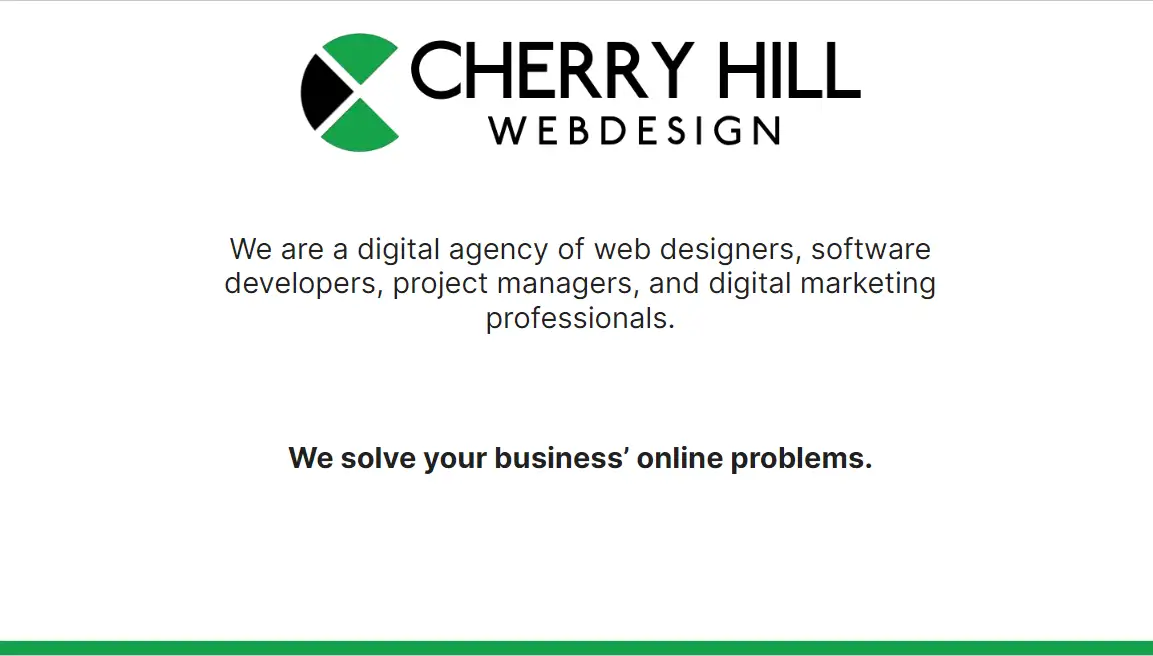
Is Web Design a Good Career? Essential Insights and Prospects
With the rapidly growing digital landscape, web design has become an increasingly attractive career choice. Web designers are in high demand, as companies seek to create engaging and visually appealing online experiences. This high demand leads to both job security and competitive salaries, making it a stable and lucrative profession.

Creativity plays a significant role in web design. Those with an eye for aesthetics and a knack for problem-solving will find this career fulfilling. It allows individuals to transform their artistic visions into functional websites, blending both design and technology.
For those considering a career in web design, there are various paths to explore. From user experience (UX) and user interface (UI) design to web development and graphic design, the field offers numerous opportunities for specialization and advancement. This versatility ensures that web design professionals can continually evolve and grow within their careers.
Key Takeaways
- Web designers are highly sought after in today's job market.
- Creativity and problem-solving are key components of web design.
- There are various specialization opportunities within the web design field.
Exploring Web Design as a Career

Web design is a promising field with a growing demand for skilled professionals. Understanding the core responsibilities, essential skills, and educational paths can help aspiring web designers make an informed decision.
Understanding the Role of a Web Designer
A web designer is responsible for creating visually appealing and functional websites. They focus on the layout, color scheme, typography, and overall user interface. Web designers must ensure that the website is easy to navigate and visually pleasing.
In addition to designing, they may also work on the user experience (UX) design. This involves making the website intuitive and user-friendly. They collaborate with clients to meet their needs and may work closely with web developers to bring designs to life.
Essential Web Design Skills and Tools
Web designers need a variety of skills and tools to succeed. Strong graphic design skills are essential for creating visually appealing websites. Familiarity with design software like Adobe Photoshop, Illustrator, and Sketch is crucial. Knowledge of coding languages such as HTML, CSS, and JavaScript is also important.
Other key skills include creativity, attention to detail, and an understanding of user experience principles. Web designers should also be able to create responsive designs that work well on different devices. Tools like Figma and InVision can help with prototyping and collaboration.
Educational Paths and Certifications
There are several educational paths to becoming a web designer. A formal education, such as a degree in web design, graphic design, or a related field, can provide a strong foundation. For those looking for more flexible options, online courses and certificate programs are available.
Many web designers also build their skills through self-study and practice. Creating a portfolio of work is crucial for showcasing skills to potential employers. Certificate programs and online courses can help gain specific skills, such as UX design or advanced coding techniques.
Several common educational paths include:
- Degree Programs: Bachelor's degrees in web design, graphic design, or related fields
- Online Courses: Platforms like Coursera and Udemy offer various courses
- Certificate Programs: Specialized skills, such as UX/UI design
The Web Design Industry Landscape

Web design is a dynamic field with clear distinctions from web development, each playing a crucial role in creating effective websites. The industry is experiencing significant growth, with strong demand and high job satisfaction.
Web Design vs. Web Development
Web designers focus on the aesthetic and user interface aspects of a website. They create layouts, color schemes, and visual elements to ensure the site is visually appealing and user-friendly. Tools commonly used by web designers include Photoshop, Sketch, and Figma, allowing them to craft engaging designs that align with brand identity.
Web developers, on the other hand, are responsible for the technical implementation of a website. They take the designer's mockups and turn them into functional sites using coding languages such as HTML, CSS, and JavaScript. There are two main types of web development: front-end, which deals with the client side, and back-end, which manages server-side operations.
The two roles, while distinct, often collaborate closely to produce a seamless and functional online experience.
Industry Growth and Job Market
The web design industry is experiencing substantial growth, reflecting its importance in the digital age. According to the Bureau of Labor Statistics, employment in web design is projected to grow by 13% from 2020 to 2030. This rate outpaces the average growth for all occupations, highlighting a strong demand for web designers.
Job satisfaction remains high due to the creative and technical aspects of the work. The average salary for an entry-level web designer is around $49,486, with freelance designers earning about $55,234 annually. The demand for skilled web designers ensures steady employment opportunities and career growth, making it an attractive field for new and experienced professionals.
Additionally, the rise of eCommerce, mobile browsing, and digital marketing underscores the necessity for expert web designers, ensuring sustained demand in the job market. As businesses continue to prioritize their online presence, the need for skilled web designers will only increase.
Gaining a Competitive Edge in Web Design

To stand out in the field of web design, building a strong portfolio and keeping skills current are essential. Detailed specifics such as coding proficiency, UX/UI expertise, and technical skills play crucial roles.
Building a Strong Portfolio
A well-crafted portfolio showcases a web designer's best work. Include examples that highlight a variety of skills, such as HTML, CSS, and JavaScript projects. Show off responsive designs and demonstrate UI/UX understanding through user-centered websites.
It's beneficial to include both personal projects and real-world client work. Personal projects allow for creative freedom, while client work demonstrates the ability to meet client needs and deadlines.
- Highlight projects that feature animation and SEO optimization.
- Use case studies to explain the design process and decisions made.
- Display proficiency with tools like Git for version control.
Regular updates to the portfolio are crucial to reflect current skills and experiences.
Keeping Skills Current and Marketable
Staying ahead means constantly updating knowledge. Technology evolves, and web designers must stay informed about the latest trends and tools.
Learning new frameworks and libraries, such as React or Vue.js, can improve job prospects. Mastering front-end coding languages and keeping up with UI and UX design principles is key.
- Enroll in online courses and attend workshops.
- Participate in web design communities and forums.
- Keep up with web design blogs and subscribe to industry newsletters.
Engage in continuous learning and practice. Regularly refine coding skills and explore new aspects of web design, like animation and SEO techniques, to remain competitive.
Prospects and Advancements in Web Design

The field of web design is full of opportunities for career growth and specialization. Job security and competitive salaries make it an attractive choice for many individuals.
Career Pathways and Specializations
Web design offers multiple career paths. A web designer can choose to specialize in areas such as user experience (UX) design, user interface (UI) design, eCommerce web design, motion design, and accessibility design. Each specialization allows designers to focus on unique aspects of the design process.
For instance, UX designers focus on creating user-friendly interfaces. UI designers, on the other hand, concentrate on the visual aspects of a website. Front-end and back-end development are also significant areas where web designers can further their skills. These roles often require a deeper understanding of coding and programming languages.
Salary Expectations and Job Security
The salary for web designers varies, but it is generally competitive. An entry-level web designer can expect to make around $49,486 per year. Freelance web designers, who have the flexibility to choose their projects, often make an average annual income of $55,234. Senior web designers typically earn higher salaries due to their experience and expertise.
Job security in this field is strong with a projected growth rate of 23% from 2021 to 2031. This indicates a steady demand for skilled professionals. Industries such as spectator sports, performing arts, and nonstore retail sectors are seeing a significant increase in demand for web design skills.
Frequently Asked Questions

Web design continues to be an attractive career choice in 2024 with promising growth, good salaries, and high demand. Below, we address some common questions about the field.
What are the latest trends in web design as a career in 2024?
Web design has seen a shift toward more user-friendly interfaces and accessibility features. There is a growing emphasis on mobile-first design and responsive layouts. Interactive elements like animations and micro-interactions are also popular.
What is the expected salary range for a web designer?
Entry-level web designers typically earn around $49,486 per year. Freelance web designers have reported an average annual income of $55,234. These numbers can vary based on location, experience, and specific job roles.
What are the challenges faced by web designers in the current market?
Web designers often deal with tight deadlines and fast-paced technological changes. Ensuring cross-browser compatibility and meeting client expectations can also be challenging. Staying updated with the latest design trends and software is crucial.
How high is the demand for web designers in the industry?
The demand for web designers is high and is expected to grow by 27 percent by 2024. This increase is driven by businesses needing to maintain an online presence and the rise in e-commerce and digital platforms.
Is a web design career path considered to be financially rewarding?
Yes, a career in web design is considered financially rewarding. Job satisfaction and compensation are typically high due to the consistent demand. The average salaries are favorable compared to many other professions.
What qualifications are necessary to succeed in a web design career?
Proficiency in technical skills such as HTML, CSS, and JavaScript is essential. Many web designers also have degrees in computer programming or graphic design, but many are self-taught. Knowledge of web design theory and user experience principles is also important.





















